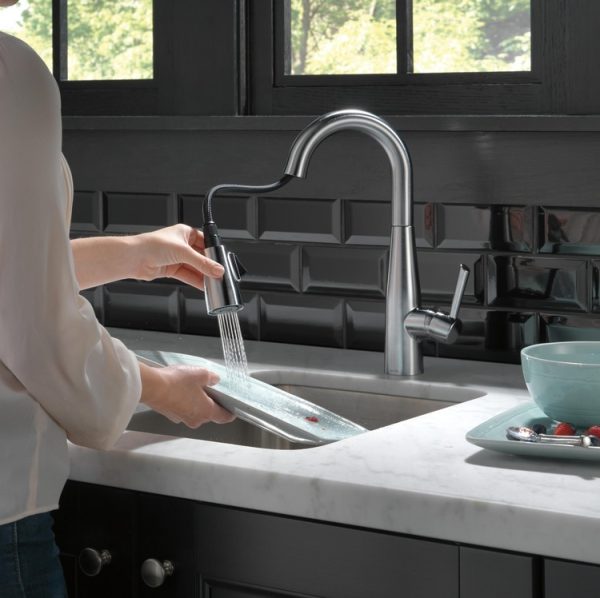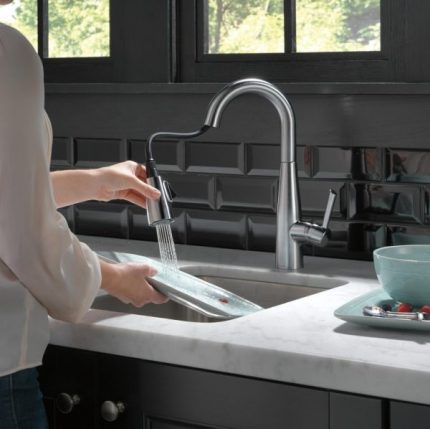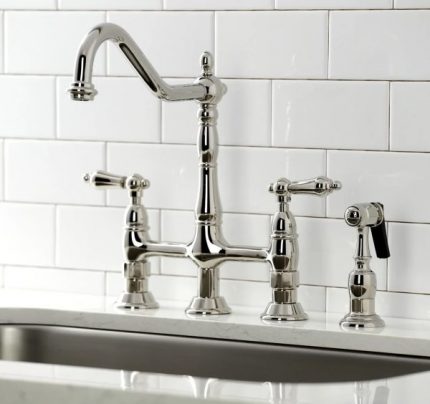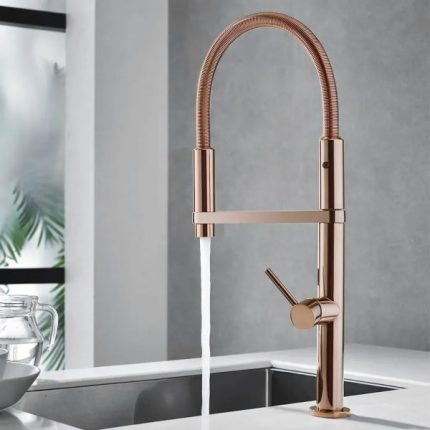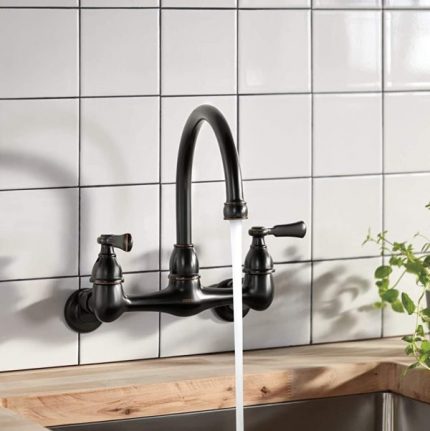It is said that the sink area is the heart of any modern kitchen, and the sink faucet is arguably the most impactful part in terms of function and style. It’s very important that you choose a suitable kitchen tap that will make your daily tasks easier.
For those of you who don’t have much experience in the faucet market, finding exactly what you need is easier said than done. In this article, we’ll discuss the things that matter most when you’re trying to separate a quality faucet from the rest.
Kitchen Sink Faucet Buying Guide
Several important factors may affect your experience with a new kitchen faucet:
1. Types of Faucets
Hardware store shelves are replete with faucets of various kinds. There are pull-down kitchen faucets with tall necks, detachable spray heads, and long hoses. They offer a break from the standard fixed-neck taps. Pull-out faucets are much the same as pull-downs, except they have shorter spouts, making them suitable for smaller kitchens.
The extended hose on those two types allows users some extra reach beyond the sink itself, making it possible to fill a tall bucket that can’t fit under the faucet, for example.
Kitchen faucets are also categorized according to their control designs. Single-handles and double-handles are the two most popular styles. There are also touchless faucets with motion or touch control technology, which have been on the rise in the last couple of years.
Several brands have also started developing voice command processors for their kitchen faucets, but the application has not yet reached its full potential. We recommend giving it a few more years.
2. Types of Cartridges
By maneuvering the handle, we control the cartridge or stem— the single most important mechanical component of a faucet. The job of a cartridge is to open and close the pathway for the water. There are two popular types: single-function cartridges and mixer cartridges.
Single-Function
Single-line stems allow for only one water line each, either hot or cold. You will see them in two-handle faucets and single-handle faucets that have only one water inlet. These stems employ either ceramic discs, which is the newer approach, or compression presses, which is comparatively outdated and mostly found in retro or vintage designs.
Disc cartridges hold a pair of ceramic discs fitted against each other. When one disc rotates, the two gaps on the other disc are uncovered, allowing water to pass. People sometimes call these “quarter-turn handles,” since they rotate 90 degrees.
The surfaces of the two discs are lubricated and processed with incredible precision to eliminate friction and reinforce sealing. Plus, ceramic itself doesn’t wear out easily, so disc cartridges last very long and are rarely subject to maintenance. However, they are vulnerable to debris in the water. Tiny residues can lodge and potentially damage the brittle discs if you accidentally apply too much force when it feels stuck.
Faucets that use compression cartridges are easily recognized by their knob handles which you tighten to apply pressure and seal off the water flow. These washers require replacement more regularly than the ceramic discs in disc cartridges and are generally less favorable.
Mixer (Dual-Function)
Mixer cartridges let you control two water supply lines at the same time using only one lever. Unlike normal cartridges, a mixer is a chamber that allows the hot and cold water to mix before exiting the spout. The two most common mixer cartridges are ball valves and ceramic disc cartridges.
Ceramic disc mixer cartridges work the same way as single-line disc cartridges, except the disc set has two openings for both hot and cold water.
Ball valves, though developed based on the same principles, use a different design. These come as multiple pieces, which makes replacing them more complicated than replacing cartridges. The effectiveness and longevity of these valves depend greatly on the material, which is why it’s recommended to steer clear of plastic and go for metals like brass.
3. Controls
One of the biggest questions about faucets these days is whether touchless control is worthwhile. To decide, we think it boils down to how often you would have to rely on the sensors.
For instance, if your hands are often so busy that turning the handle is a challenge, the addition of motion sensors can be an immense help. It helps if you’re simply a health-conscious individual, as well, because touching is limited. Otherwise, it’s not worth the money because it doesn’t add significant functionality.
With handles, you can either choose single or double. Single-handle mechanisms are more advanced— they let you do a two-handed job with only one— but double-handle faucets are more accurate at temperature mixing. The temperature difference is not usually very noticeable, so people now go for the double-handle design mostly for its nostalgic effect.
4. Useful Features
Many pull-down or pull-out faucets have multiple spraying configurations. Concentrated streams can lend extra pressure for rinsing, and a boosted flow helps shorten simple filling tasks. Thumb-trigger valves in the sprayer also allow you to pause the stream at times to save water during any transition.
Most touchless faucets have an auto-shutoff feature that will automatically turn the water off if it runs for several minutes straight. Newer hands-free models have improved sensors with better sensitivity that restrict accidental activation, which will come in handy if there are pets in your house.
A protective finish is also important unless you don’t care about the appearance of your fixtures. Other helpful features include temperature indicators, improved seals, simplified design for installation, and head-docking support, to name a few.
5. Mounting Holes
Certain faucets only require one mounting hole for their installation, but other sets may need as many as five. If you don’t have enough of them on your countertop, you will need to have some cut out. Rest assured that the process won’t take much effort or time.
If there are holes that you won’t be using, the easiest way to handle the situation is using escutcheon plates or caps (sometimes not included) to cover them up. Alternatively, you can reserve the holes for a soap dispenser or a side sprayer.
6. Price Ranges
A basic functional faucet is around $50, even cheaper. As the price ranges up toward $100, the construction gets better. More specifically, you’ll start to see metal materials like brass and stainless steel more frequently than plastic, still mainstreamed but more sophisticated designs, and hardware that is less prone to leaking.
Price points between $100 and $250 have the most exciting values. There are high-quality construction materials and craftsmanship, which results in greater durability; more unique designs, ranging from Victorian to more futuristic looks; and more high-end features, such as magnetic docking (for detachable head sprayers) and sensors.
There’s nothing much going on over the $250 mark. Most of the upgrades in the top-tier range are minor and look-oriented; the gold finish is one prime example. The only functional additions in this range are smart features (including voice command), which are only available at around $500 and higher.


